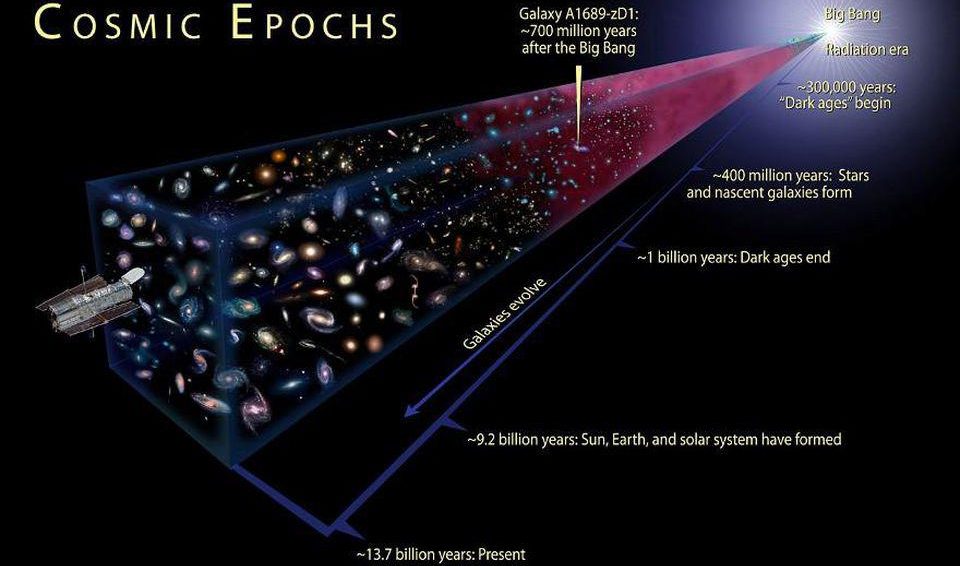Sorry, Donald Trump, it can’t be infinity

There is, and never will be, a substitute for the real knowledge we’ve obtained about the actual Universe.
“There are two infinities that confuse me: the one in my soul devours me; the one around me will crush me” –Gustave Flaubert
Last week, the President of the United States issued an executive order reviving the National Space Council. But at the end of the President’s remarks, immediately following the signing of the order, he made the following statement:
This is infinity here. It could be infinity. We don’t really don’t know. But it could be. It has to be something — but it could be infinity, right?
The Universe is the most all-encompassing thing we have access to, but we’ve known for a long time that all we’ll ever travel to, communicate with, or even observe, absolutely cannot be infinite.
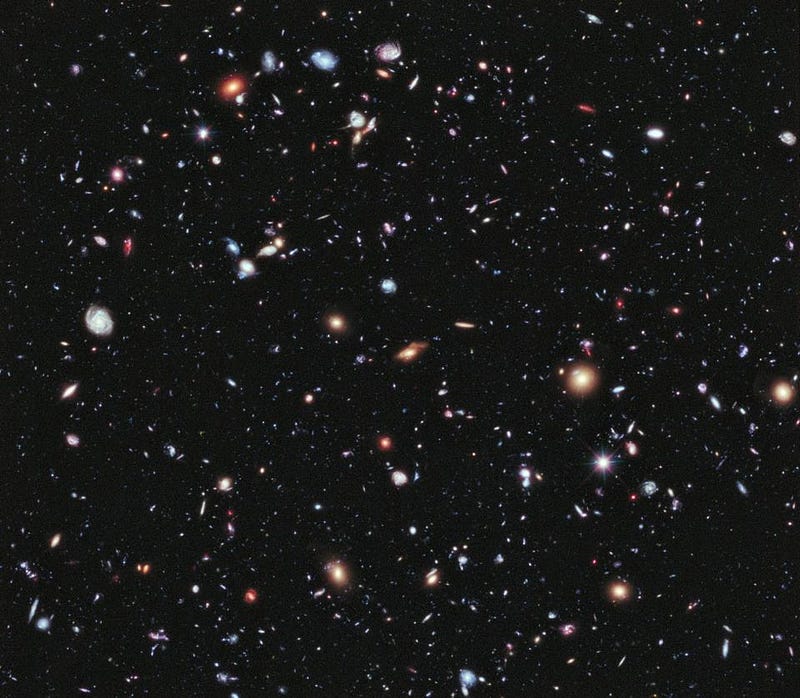
When you look out at the distant Universe, beyond the stars in our own galaxy to the great cosmic abyss beyond, there continue to be more and more galaxies as far as our most powerful telescopes can see. But this pattern won’t continue on forever. The farther away we look, the farther back in time we look, and so we see galaxies as they were in the past. Overwhelmingly, the more distant the galaxies are, the more we see them to be:
- smaller in mass and size,
- younger in terms of the stars found within,
- richer in gas and more active in terms of star formation,
- expanding away from us more rapidly,
- and less evolved in terms of shape.
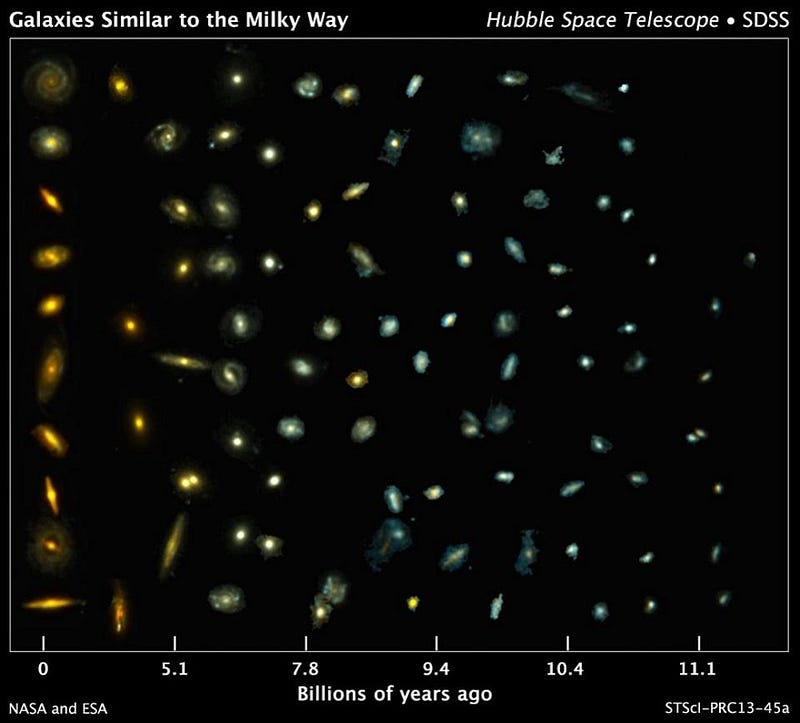
All of this fits in very nicely with the leading theory of where our Universe came from: the Big Bang. The reason we see younger, less evolved galaxies at greater distances is because the Universe has a finite age. In fact we’ve measured that age very accurately thanks to detailed measurements of the fluctuations in the cosmic microwave background, and we find that our Universe has been around for 13.8 billion years since the hot Big Bang. Because it’s also been expanding, cooling, and evolving this entire time, we know that the number of galaxies (around two trillion), the amount of matter (approximately 1080 particles), and the volume of space accessible to us (46 billion light years in all directions) are all finite.
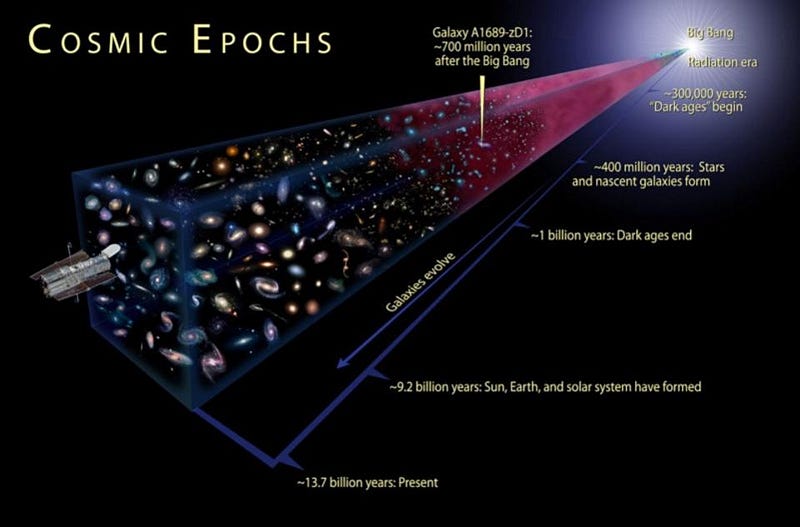
But it gets worse than that. Because of the existence of dark energy, the farther away distant objects in the Universe are, the faster they move away from us, and they’ll continue to recede faster and faster as time moves on. While we might be able to see out into the future for 46 billion light years in all directions, most of those galaxies are already unreachable. If we left on a journey today, arbitrarily close to the speed of light, we’d only be able to catch up to about 3% of the galaxies within the observable Universe, with approximately 20,000 new stars crossing the threshold to become unreachable with each second that goes by.
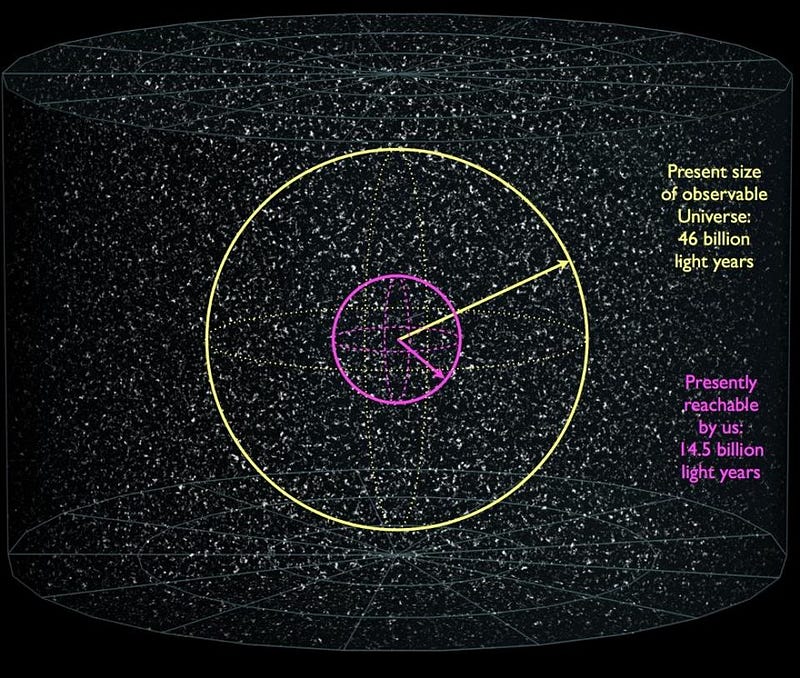
None of this is to say that it’s impossible for the Universe to truly be infinite. But the part we can reach is finite and quantified (the accessible Universe), the part we can see today (i.e., the observable Universe) is finite and quantified, and even the part we’ll ever be able to observe, even given an infinite amount of time, is finite, quantified, and only about 10% more than what we can see today. Under the laws of physics, particularly with relativity and quantum field theory as we know them, there is no way we’ll ever truly go to “infinity and beyond,” except in our own imaginations.
The most frustrating thing about the President’s statement is that he’s very clearly talking about something that he hasn’t bothered to learn the basics of, yet wants to sound intelligent and authoritative when it comes to it. “It could be infinity” is code for, “I don’t need to know any more than I currently do, and neither does anyone else.” Maybe that’s true, but there are people who study this for a living. If you’re curious about it, you can get that information in any number of places… but you won’t find an awareness or an appreciation for it in the nation’s highest office.
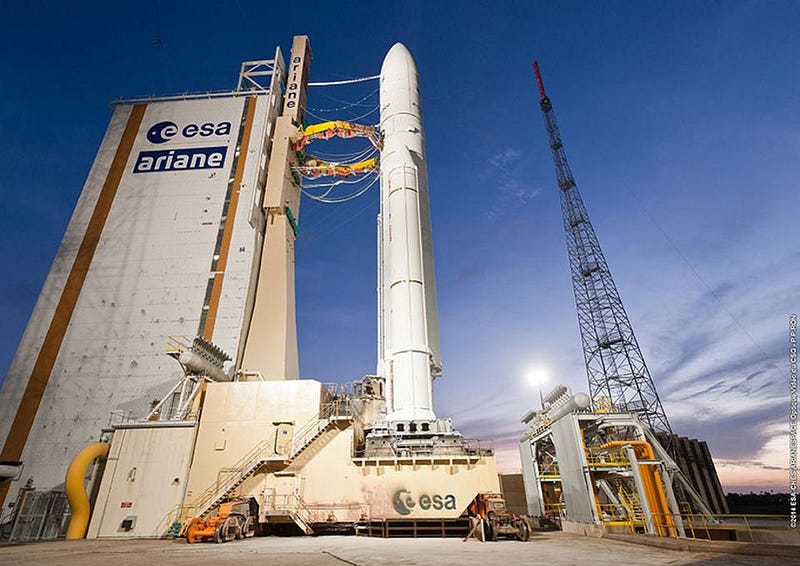
But just because we can’t explore infinity doesn’t means we shouldn’t explore things to the absolute limits of what’s physically allowable. The purpose of the National Space Councilis to advise and assist the President on matters of national space policy and strategy. It is chaired by the Vice President and is composed exclusively of cabinet members and presidential appointees. The only two spots for scientific advisers — the Administrator of the National Aeronautics and Space Administration and the Director of the Office of Science and Technology Policy — are presently both vacant. There is no guarantee that either one of them will be filled by an actual scientist or someone with scientific expertise, even though those are the only people who possess the necessary skills to succeed at those jobs.
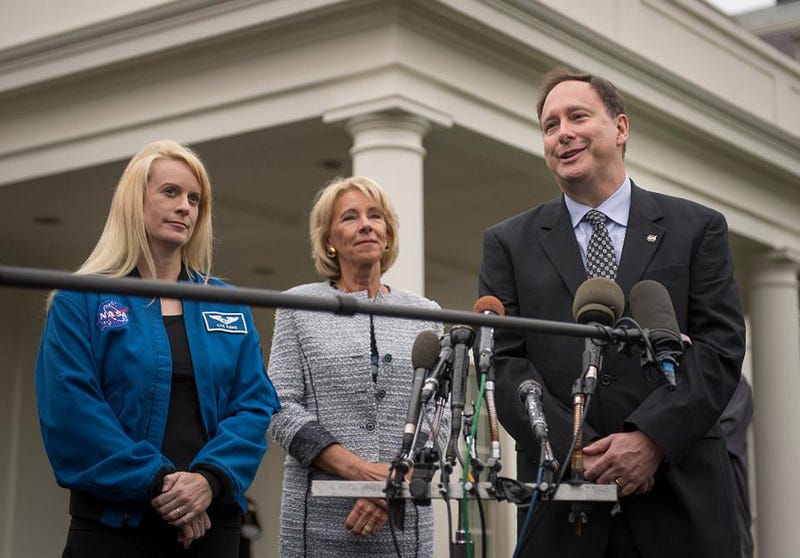
The only way we’re ever going to take humanity as far into the Universe as we can possibly go is with a large, consistent-across-the-years source of funding for scientific exploration of our cosmos. It’s going to require bold, new initiatives for ambitious scientific projects and, if we want humans to be a part of it, revolutionary, sustained investment in crewed spaceflight. Yet the new council has no control over budgetary matters, and the President’s request to congress for NASA’s 2018 budget represents a 3% decrease from 2017, with a plan for no further increases across the board. Among the subdivisions seeing their funding cut are Science, Aeronautics, Space Technology, and Space Operations, while Education is eliminated entirely. Until we put our money where our mouths are, our dreams of other worlds, other stars and other galaxies will remain just that: dreams.
Ethan Siegel is the author of Beyond the Galaxy and Treknology. You can pre-order his third book, currently in development: the Encyclopaedia Cosmologica.




